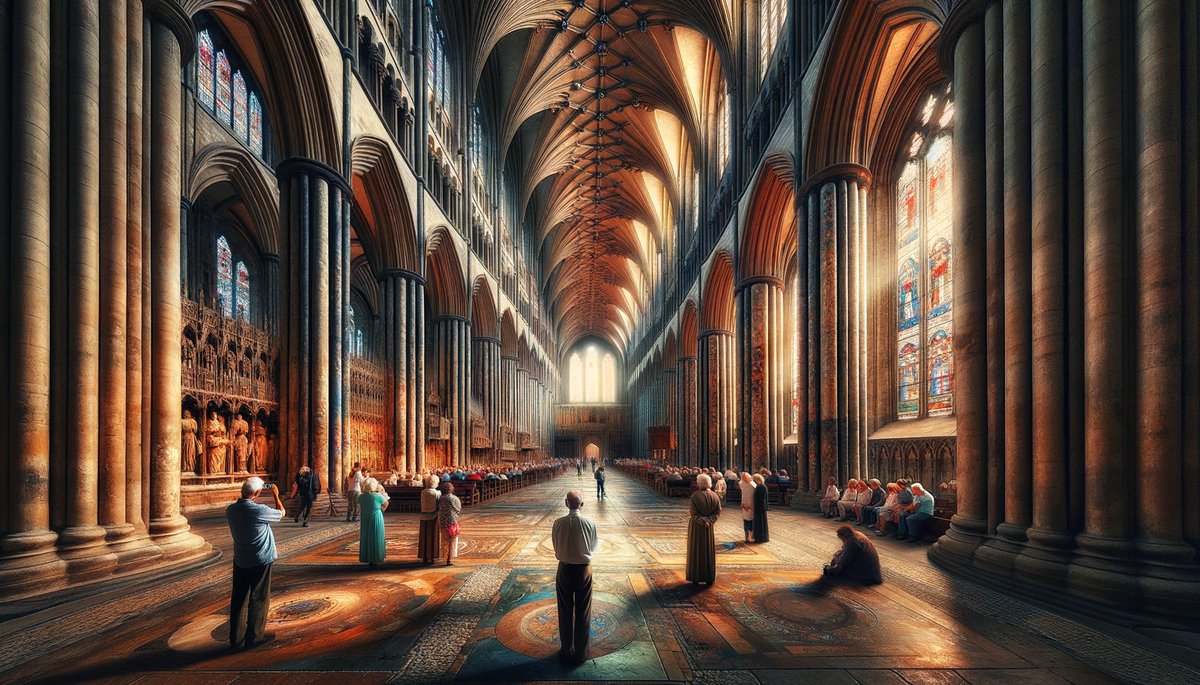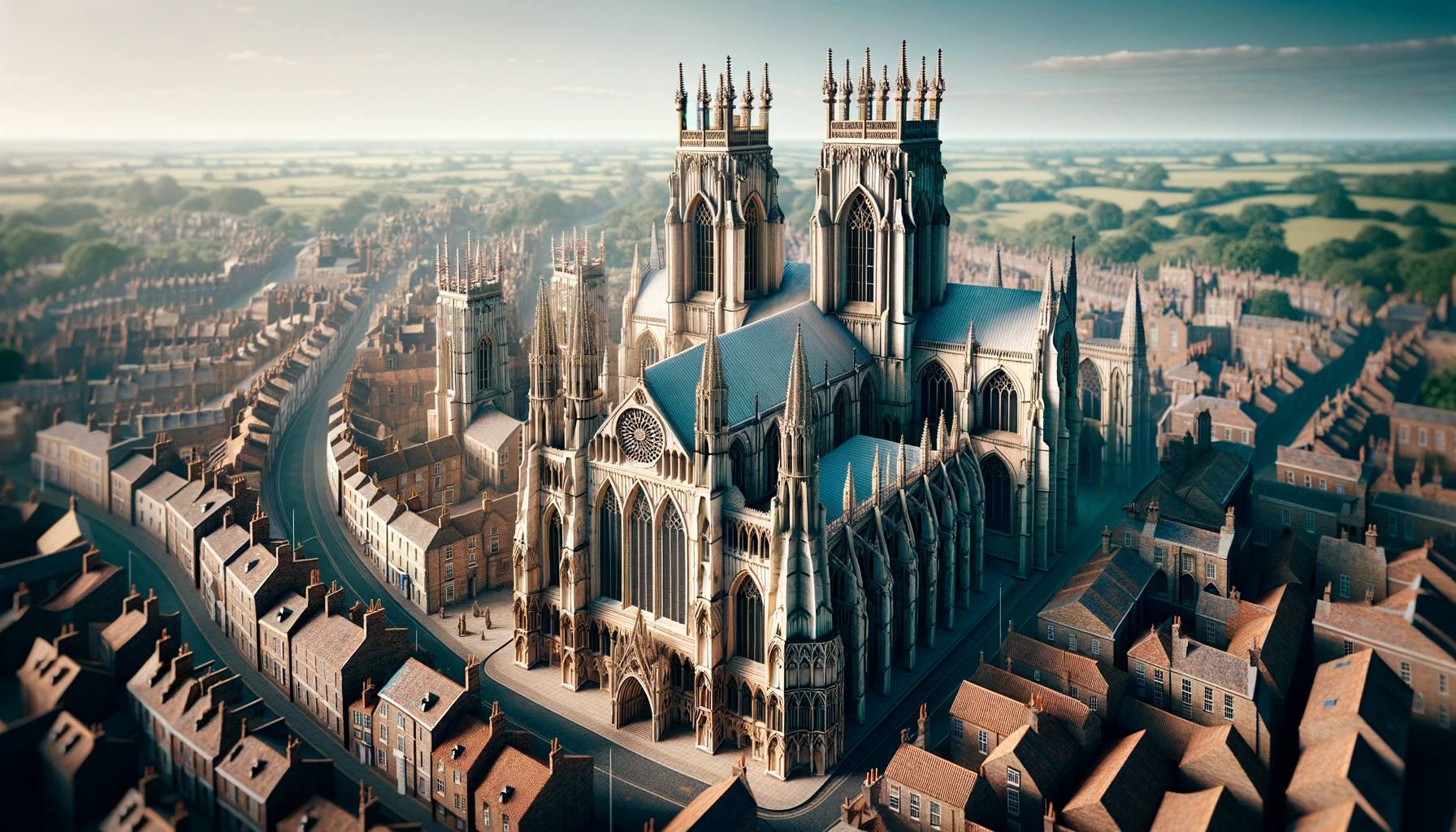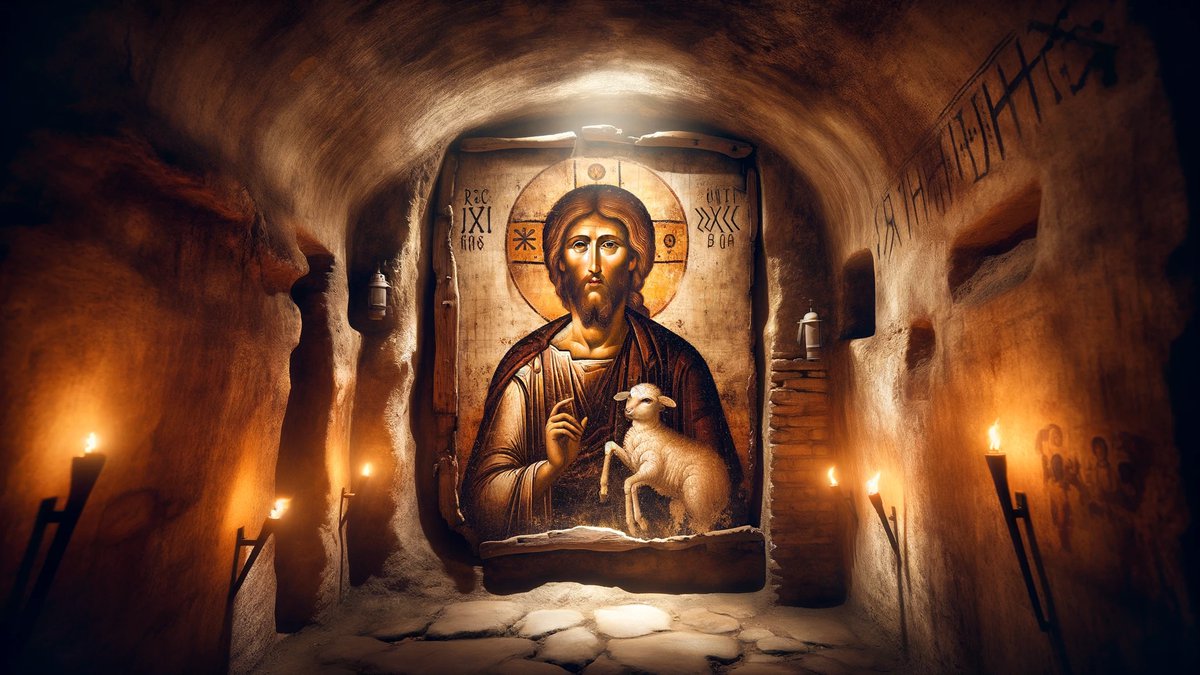Home>Arts and Culture>What Is The Oldest Cathedral In The World


Arts and Culture
What Is The Oldest Cathedral In The World
Published: February 16, 2024
Peter Smith, Editorial Director at Christian.net, combines deep insights into faith, politics, and culture to lead content creation that resonates widely. Awarded for his contributions to religious discourse, he previously headed a major organization for religious communicators, enhancing dialogue on faith's societal impacts.
Discover the oldest cathedral in the world and explore its rich history and cultural significance. Uncover the fascinating arts and culture of this ancient architectural marvel.
(Many of the links in this article redirect to a specific reviewed product. Your purchase of these products through affiliate links helps to generate commission for Christian.net, at no extra cost. Learn more)
Table of Contents
Introduction
Cathedrals stand as timeless testaments to human creativity, faith, and architectural prowess. These awe-inspiring structures have withstood the tides of history, bearing witness to the evolution of societies and cultures. As we delve into the intriguing realm of cathedrals, we embark on a journey that spans centuries, traversing continents and civilizations.
The allure of cathedrals lies not only in their grandeur but also in the stories they harbor within their hallowed walls. Each cathedral whispers tales of master craftsmen toiling tirelessly, of devout worshippers seeking solace, and of the tumultuous events that have shaped the course of history. From the towering spires that seem to touch the heavens to the intricate stained glass windows that bathe the interiors in a kaleidoscope of colors, cathedrals are veritable treasure troves of art, culture, and spirituality.
In our quest to unravel the mystery of the oldest cathedral in the world, we are compelled to delve into the annals of time, where the echoes of ancient chants and the whispers of bygone eras still linger. The pursuit of this knowledge beckons us to explore the very essence of human ingenuity and devotion, transcending geographical boundaries and cultural divides.
Join us as we embark on a captivating expedition through the corridors of history, where the enigmatic allure of cathedrals awaits, ready to unveil its secrets and enthrall us with its timeless splendor.
Definition of a Cathedral
A cathedral is not merely a place of worship; it is a profound embodiment of human creativity, spiritual devotion, and architectural magnificence. Defined as the principal church of a diocese, a cathedral holds a position of paramount importance within the ecclesiastical hierarchy. It serves as the seat of a bishop, symbolizing the spiritual authority and leadership of the diocese.
Architecturally, cathedrals are characterized by their grandeur and meticulous craftsmanship. These monumental structures often feature soaring spires, majestic domes, and ornate facades that exude a sense of divine splendor. The interior of a cathedral is typically adorned with intricate stained glass windows, awe-inspiring frescoes, and imposing altars, creating an atmosphere of reverence and transcendence.
Beyond their architectural significance, cathedrals serve as cultural touchstones, reflecting the artistic and historical heritage of the communities they inhabit. They are repositories of priceless artworks, including sculptures, paintings, and tapestries, which bear testament to the creative genius of generations past. Moreover, cathedrals often house the tombs of revered saints, monarchs, and historical figures, adding a layer of historical richness to their sacred precincts.
In essence, a cathedral is a living testament to the enduring legacy of human civilization, encapsulating the intertwining threads of faith, art, and history. Its significance transcends religious boundaries, captivating the imagination of visitors and scholars alike with its profound symbolism and timeless beauty. As we unravel the mystery of the oldest cathedral in the world, we are compelled to appreciate the profound cultural and spiritual significance that these architectural marvels embody.
Criteria for Determining the Oldest Cathedral
Determining the oldest cathedral in the world is a task that requires a meticulous examination of historical records, architectural evidence, and religious significance. Several criteria come into play when ascertaining the age of a cathedral, shedding light on its venerable lineage and historical precedence.
-
Historical Documentation: One of the primary criteria for establishing the age of a cathedral is the availability of historical documentation. This includes written records, inscriptions, and chronicles that provide insights into the construction and consecration of the cathedral. These historical sources serve as invaluable guides, offering glimpses into the distant past and enabling scholars to trace the origins of these sacred edifices.
-
Architectural Style and Period: The architectural style and period in which a cathedral was constructed serve as crucial indicators of its age. By analyzing the structural elements, design motifs, and construction techniques employed in the cathedral, experts can discern the era in which it was built. This involves studying the evolution of architectural styles across different epochs and identifying the unique features that characterize each period.
-
Religious Significance: The religious significance and historical prominence of a cathedral play a pivotal role in determining its antiquity. Cathedrals that have served as centers of religious pilgrimage, witnessed significant historical events, or held revered relics are often imbued with a profound sense of antiquity. The impact of these religious and historical associations contributes to the cathedral's status as an ancient and revered place of worship.
-
Carbon Dating and Scientific Analysis: In some cases, scientific methods such as carbon dating and architectural analysis are employed to ascertain the age of a cathedral. By examining the composition of building materials, conducting radiocarbon dating of organic remains found within the structure, and employing advanced imaging techniques, researchers can glean precise insights into the chronological timeline of the cathedral's construction.
-
Continuous Usage and Preservation: The continuity of usage and the efforts undertaken for the preservation of a cathedral also offer valuable clues regarding its age. Cathedrals that have withstood the test of time, undergone renovations in different epochs, and remained active centers of worship for centuries bear witness to their enduring legacy and historical significance.
In the quest to identify the oldest cathedral in the world, these criteria serve as guiding beacons, illuminating the path to unraveling the enigmatic tapestry of history and heritage woven within these sacred structures. Through a meticulous examination of these factors, scholars and enthusiasts endeavor to unveil the timeless secrets harbored by the world's most ancient cathedrals.
The Oldest Cathedral in the World
The quest to pinpoint the oldest cathedral in the world is a captivating odyssey that leads us through the annals of time, where the echoes of ancient chants and the whispers of bygone eras still linger. Among the contenders for this prestigious title, the Cathedral of Saint Pierre in Autun, France, stands as a venerable testament to the enduring legacy of early Christian architecture.
Constructed in the 5th century, the Cathedral of Saint Pierre exudes an aura of antiquity, bearing witness to the tumultuous events that have shaped the course of history. Its hallowed halls resonate with the echoes of centuries past, offering a glimpse into the dawn of Christian ecclesiastical architecture. The cathedral's austere Romanesque facade and imposing interior evoke a sense of reverence, transporting visitors to a bygone era steeped in religious fervor and artistic splendor.
The Cathedral of Saint Pierre's historical significance is underscored by its association with the renowned Bishop Saint-Lazare, whose visionary leadership and unwavering devotion left an indelible mark on the cathedral's legacy. The intricate sculptures adorning the cathedral's portals and the awe-inspiring tympanum depict biblical narratives with a masterful artistry that reflects the spiritual fervor of the era.
Furthermore, the cathedral's enduring architectural features, including its robust stone construction and the remnants of early Christian mosaics, serve as tangible testaments to its ancient lineage. The palpable sense of history that permeates the cathedral's sacred precincts beckons visitors to embark on a profound journey through the corridors of time, where the interplay of faith and artistry converges in a harmonious symphony of cultural heritage.
As we stand in awe of the Cathedral of Saint Pierre's timeless grandeur, we are reminded of the enduring power of human creativity and spiritual devotion. Its weathered stone walls bear witness to the ebb and flow of civilizations, offering a poignant reminder of the enduring legacy of faith and artistry. Through the Cathedral of Saint Pierre, we are transported to an epoch where the foundations of Christian architecture were laid, and the seeds of artistic ingenuity were sown, leaving an indelible imprint on the tapestry of human history.
In the hallowed embrace of the Cathedral of Saint Pierre, we encounter not merely a place of worship, but a living testament to the resilience of the human spirit and the enduring allure of ancient cathedrals. It stands as a beacon of cultural heritage, inviting us to unravel its enigmatic past and immerse ourselves in the timeless splendor of the world's oldest cathedral.
Conclusion
In the timeless tapestry of human history, cathedrals emerge as resplendent threads, weaving together the narratives of faith, artistry, and cultural heritage. As we conclude our exploration of the oldest cathedral in the world, the Cathedral of Saint Pierre in Autun, France, stands as a venerable testament to the enduring legacy of early Christian architecture. Its weathered stone walls and austere Romanesque facade bear witness to the passage of centuries, offering a poignant reminder of the indomitable spirit of human creativity and devotion.
The journey through the corridors of history, in pursuit of the oldest cathedral, has unveiled not only the architectural magnificence of these sacred edifices but also the profound cultural and spiritual significance they embody. Cathedrals transcend the boundaries of time and space, serving as custodians of artistic masterpieces, repositories of historical narratives, and sanctuaries of solace and contemplation. They stand as living testaments to the resilience of human ingenuity, bearing witness to the triumphs and tribulations of civilizations across the ages.
The Cathedral of Saint Pierre, with its venerable lineage and ancient allure, beckons us to embark on a profound journey through the annals of time. It invites us to immerse ourselves in the echoes of ancient chants and the whispers of bygone eras, where the interplay of faith and artistry converges in a harmonious symphony of cultural heritage. Through its hallowed halls and imposing architecture, the cathedral imparts a profound sense of reverence, inspiring awe and introspection in equal measure.
As we bid farewell to our exploration of the oldest cathedral in the world, we carry with us the enduring legacy of these architectural marvels. Their timeless splendor and historical significance continue to captivate the imagination, inviting us to unravel the enigmatic tapestry of history and heritage woven within their sacred precincts. The pursuit of knowledge and appreciation for these venerable structures serves as a testament to the enduring allure of cathedrals, transcending geographical boundaries and cultural divides.
In the Cathedral of Saint Pierre, we find not only a place of worship but a living testament to the resilience of the human spirit and the enduring allure of ancient cathedrals. It stands as a beacon of cultural heritage, inviting us to delve into its enigmatic past and immerse ourselves in the timeless splendor of the world's oldest cathedral.















